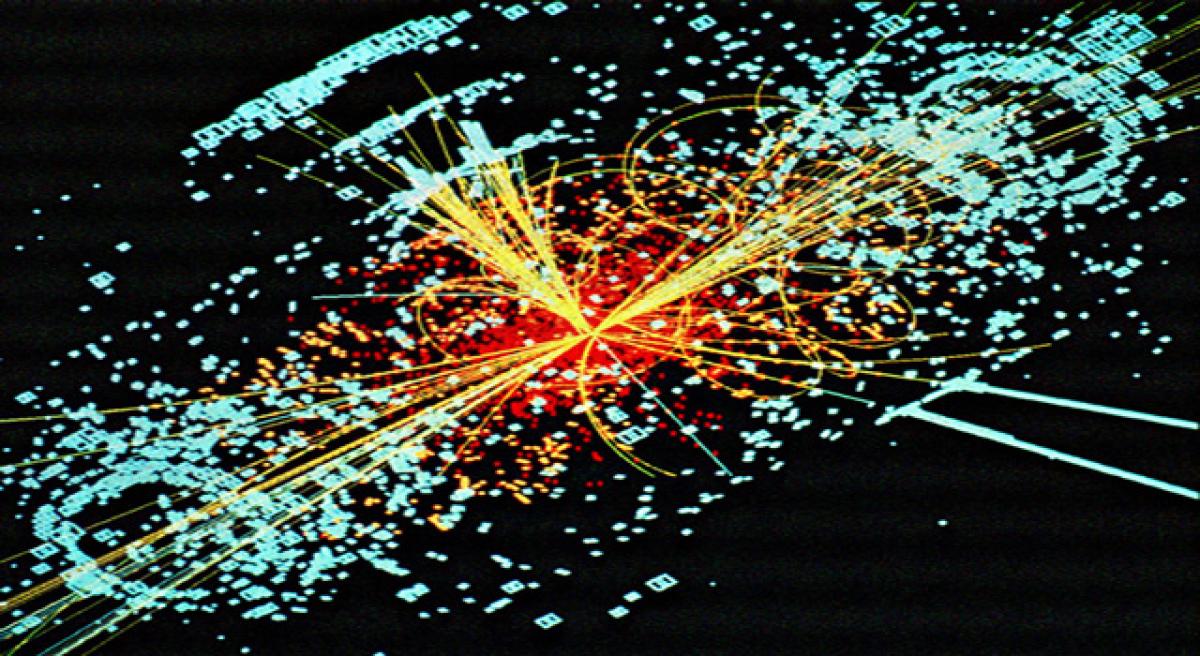Live
- Gadwal collector briefs on details of voters
- Jupally Krishna Rao takes part in Alampur rallu
- Bharath Prasad files 3rd Nomination
- Baisakh Month: A Time of Auspicious Beginnings and Sacred Festivals
- Oust BJD govt for overall development, says Shah
- Unveiling the Hidden Gems: Surprising Health Benefits of Garlic Peels
- Overcoming Sleep Struggles: A Comprehensive Guide to a Restful Night
- RTC bus hit the auto
- MLA Kuchukula Rajesh Reddy participated in the Birappa festival
- DMHO starts awareness campaign on Malaria
Just In

Stanford and University of California researchers have found the first evidence of particles that are their own antiparticles. These \'Majorana fermions’ could one day help make quantum computers more robust, according to Daily Mail. The \'angel particle\' was discovered in a series of lab experiments on exotic materials at the University of California in collaboration with Stanford University.
Stanford and University of California researchers have found the first evidence of particles that are their own antiparticles. These 'Majorana fermions’ could one day help make quantum computers more robust, according to Daily Mail. The 'angel particle' was discovered in a series of lab experiments on exotic materials at the University of California in collaboration with Stanford University.
Scientists have theorised that when the Big Bang first created the universe, equal amounts of matter and anti-matter were produced. Anti-matter is made from particles which are the 'anti-particles' of those from normal matter Now researchers have found the first evidence that these particles could exist, The scientists named their discovery the 'Angel Particle' after the novel Angels and Demons by Dan Brown, which includes the making of a bomb from the combination of matter and anti-matter.
In 1937, Italian theoretical physicist Ettore Majorana theorised that there is another class of particle known as fermions – one that is both matter and anti-matter. The latest discovery is seen to have huge implications in quantum computing, which have the potential to be several, several times more powerful than a normal computer. Corresponding to most kinds of particles, there is an associated antiparticle with the same mass and opposite charge (including electric charge).
For example, the antiparticle of the electron is the positron (antielectron), which has positive charge and is produced naturally in certain types of radioactive decay. The opposite is also true: the antiparticle of the positron is the electron. Anti-particles are often made out to be a lot more mystical and mysterious than they actually are, thanks to science fiction, and other fiction such as Dan Brown’s Angels and Demons.
Every type of particle has an anti-particle. Usually this is a distinct type of particle, but it can happen that the anti-particle and the particle are the same. Only particles satisfying certain conditions (for example, if they are electrically neutral) may be their own antiparticles. The only examples so far from the list of elementary particles are photons, Z particles, gluons and gravitons… and possibly the three neutrinos.
Every other particle has a distinct anti-particle, with the same mass but opposite electric charge. The neutron is an example of an electrically neutral particle that is not its own antiparticle; like the proton, the neutron contains more quarks than anti-quarks, whereas the anti-neutron contains more anti-quarks than quarks, according to profmattstrassler.com

© 2024 Hyderabad Media House Limited/The Hans India. All rights reserved. Powered by hocalwire.com







